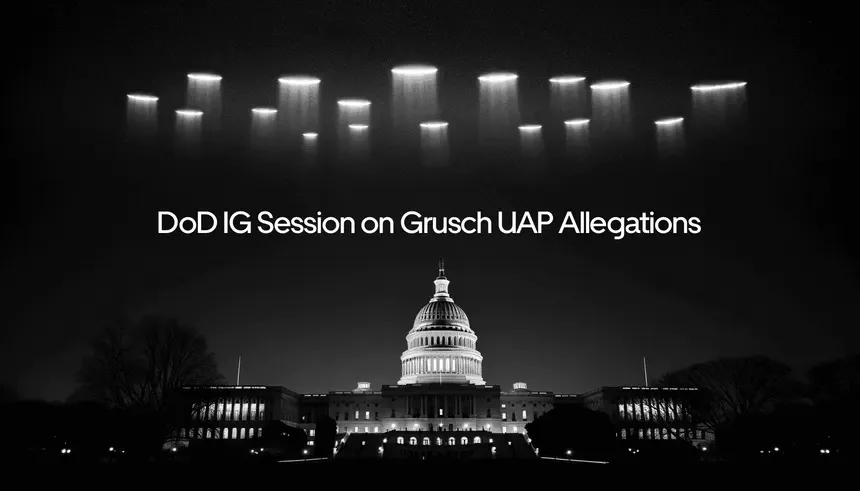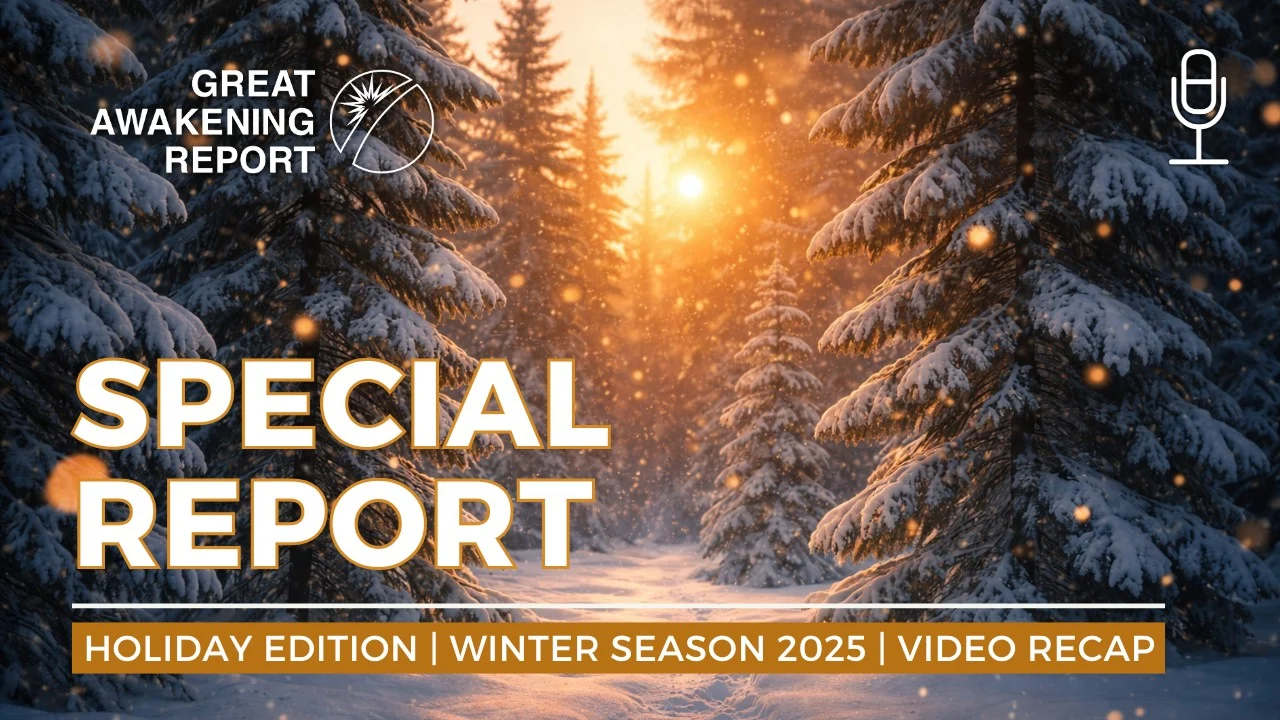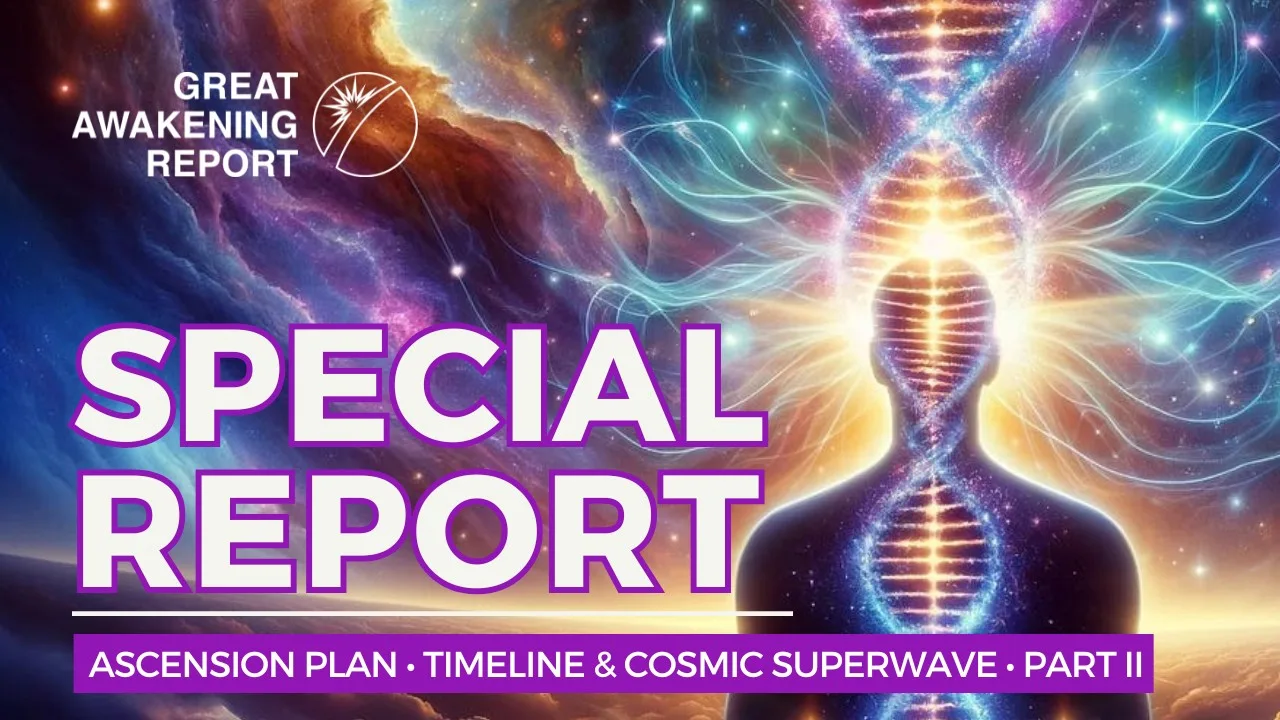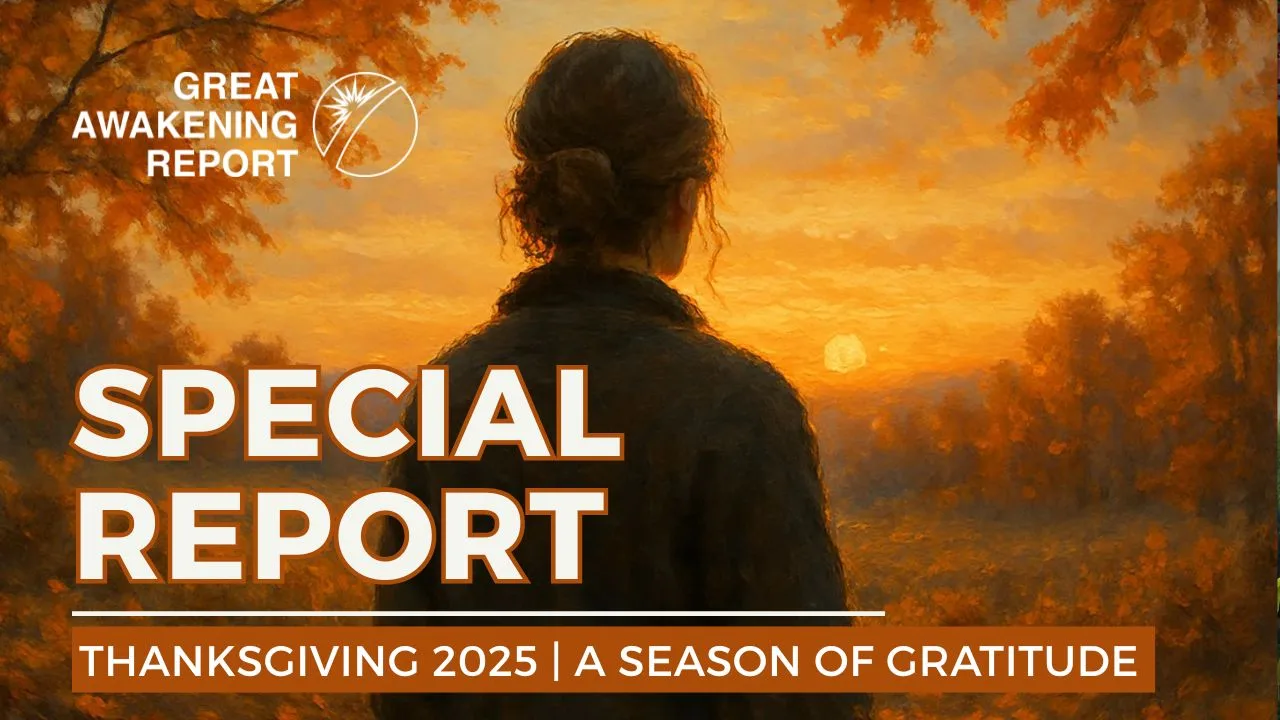Introduction to the Age of Disclosure
The Age of Disclosure marks a significant shift in the public’s relationship with Unidentified Aerial Phenomena (UAP) and UFOs, influenced by a historical context of secrecy and recent governmental transparency. Initially, the phenomena captured public interest during the mid-20th century amid the Cold War, fueled by military secrecy and a growing fascination with space. This interest waned with time but saw a resurgence in recent years, particularly after the release of Navy videos in 2017 showing unexplained aerial encounters.
Recent developments have escalated public interest, especially with the U.S. government’s acknowledgment of UAP investigations. The establishment of the Unidentified Aerial Phenomena Task Force in 2020 signaled a formal approach to study these incidents, leading to a report delivered to Congress in June 2021 that outlined 144 documented encounters, only one of which could be explained. This report and subsequent discussions around transparency have had a profound impact on how the phenomena are perceived, igniting debates across various platforms and encouraging the scientific community to engage with these inquiries.
Public interest has been further amplified by media representations and documentaries, alongside advocacy for the disclosure of classified information. The rise of alternative media platforms and forums has fostered a vibrant culture of discussion and investigation, enabling broader audiences to engage with the topic. This shift reflects a collective yearning for truth amid governmental narratives that have historically tended to obfuscate rather than clarify.
As societal views evolve, culminating in a heightened demand for accountability and openness, the Age of Disclosure could represent a pivotal moment in how we understand our place in the universe and confront the unknown. For further insights into related topics, explore our previous discussions on the UAP phenomenon in our archives, notably this article on UAP findings and the societal implications of such disclosures.
Significance of the Congressional Hearings
The congressional hearings have far-reaching implications for national security, public perception, and scientific inquiry. Firstly, these hearings can significantly bolster national security by allowing lawmakers to scrutinize government policies and actions, thereby holding agencies accountable and ensuring that the public is informed about potential threats. For example, the scrutiny on intelligence activities can lead to improved oversight and reforms that enhance national security protocols. This was evident during hearings related to cybersecurity threats, where Congress pushed for stronger regulations to protect critical infrastructure from potential attacks.
Public perception is also heavily influenced by congressional hearings. They serve as a platform for transparency and can either strengthen or undermine public trust in government institutions. When lawmakers address controversial issues, such as election integrity or public health responses during a pandemic, the outcomes of these hearings can shape narratives that affect voter behavior and public opinion, as seen in various post-hearing analyses.
Moreover, scientific inquiry benefits from congressional hearings that address pressing issues like climate change or pandemic response strategies. Legislation that arises from these hearings can promote funding for research and encourage collaboration between governmental bodies and scientific communities. This was illustrated in the set of hearings concerning health policy reforms, which aligned research funding with identified public health challenges, thereby fostering innovation in medical research and technologies.
In summary, the impact of congressional hearings reaches deep into national security frameworks, shapes public opinion on critical issues, and can significantly enhance the scientific community’s response to ongoing challenges. Continuous engagement in these hearings is crucial for fostering a well-informed public and effective policy development. For further insights on related governmental processes, refer to our past reports on accountability and oversight in Congress, such as this analysis on government actions during national crises.
Key Testimonies and Findings
During the recent hearings, multiple witnesses provided powerful testimonies regarding issues of government oversight, censorship, and the implications for citizen rights. One testimony highlighted how censorship of alternative media has restricted public access to information, preventing individuals from understanding crucial societal issues. Anonymous whistleblowers revealed longstanding practices of media manipulation by governmental bodies, which aim to shape narratives beneficial to specific agendas rather than fostering open public discourse [Great Awakening Report].
Key findings from these hearings underscored the alarming trend of not only a concerted effort to silence dissenting voices but also a disconcerting lack of accountability among regulatory bodies. Witnesses documented instances where misinformation campaigns, often funded or endorsed by state entities, compromised the integrity of independent journalism. This environment stifles alternative viewpoints that are essential for a well-functioning democracy, leading to significant shifts in public perception based on manipulated information flows [Great Awakening Report].
Furthermore, testimonies called for a reevaluation of the legal frameworks governing free speech and press, with recommendations for stronger protections against censorship indicating a collective desire for enhanced transparency and integrity in media reporting. This pivotal moment reflects the pressing need for vigilance against governmental overreach and the safeguarding of civil liberties [Great Awakening Report].
Government Transparency: A Double-Edged Sword
The disclosure of UAP (Unidentified Aerial Phenomena) investigation details raises significant questions about the balance between government transparency and national security. On one hand, increased transparency can foster public trust, satisfy the public’s right to know, and encourage informed discussion about potential extraterrestrial life and national defense implications. However, there are inherent risks associated with such disclosures, particularly concerning national security.
Government agencies must navigate the complexities of sharing information without compromising intelligence sources or national security operations. Researchers have pointed out that the public’s demand for openness can conflict with the need to protect sensitive data, which if released, could potentially be exploited by adversaries. This highlights a fundamental tension where transparency could inadvertently lead to vulnerabilities.
Moreover, the context of UAP sightings has implications beyond just military personnel and equipment; it encompasses national defense strategies and public safety considerations. Recent reports suggest that while sharing UAP investigation findings may benefit public interest, agencies must also consider the ramifications of disclosing information that may not be fully understood or contextualized by the public.
Ultimately, achieving a balance between transparency and the protection of sensitive information is crucial in navigating the delicate landscape of UAP investigations. This issue not only pertains to how governments interact with their citizens but also frames broader discussions regarding trust and accountability in governance amid growing public curiosity about unexplained phenomena. For additional insights on related transparency matters, see our article on censorship of alternative media.
Public Reaction and Cultural Impact
The Kavanaugh hearings have significantly influenced public opinion and cultural discourse, reflecting deep societal divisions and galvanizing activism. Following the hearings, particularly with the allegations of sexual misconduct against Kavanaugh, there was a pronounced increase in activism around women’s rights and sexual assault awareness. This shift is evidenced by the uptick in attendance at women’s marches and the proliferation of #MeToo discussions across social media platforms, which empowered individuals to openly share their experiences of sexual violence and harassment.
Media coverage played a pivotal role in shaping perceptions during the hearings, with news outlets polarized in their reporting. The narratives differed widely, with some framing Kavanaugh as a victim of a political smear campaign, while others focused intensely on the credibility of the accusers and the potential implications for survivors of sexual abuse. The portrayal of these events has led to ongoing debates about gender, power, and justice, influencing how society views accountability in both public and private spheres.
Culturally, the hearings have prompted conversations around the treatment of women in politics and professional spaces, emphasizing the need for systemic change. Prominent figures in media and entertainment have utilized their platforms to dissect these events, further embedding the hearings’ impact into the fabric of contemporary social discourse.
In summary, the Kavanaugh hearings catalyzed a substantial shift in public dialogue around sexual violence and gender politics, underlining the fragile balance of justice and political machinations in the contemporary landscape. For more insights on how these societal shifts manifest in various contexts, please visit this article on the Great Awakening Report.
Scientific Community’s Response
The scientific community’s engagement in the discussion surrounding Unidentified Aerial Phenomena (UAPs) has intensified dramatically in recent years, driven by a growing acknowledgment of the need for rigorous investigation into these unexplained phenomena. This shift has been marked by calls from prominent scientists, researchers, and institutions for a structured, transparent approach to UAP studies.
Notably, the release of the Office of the Director of National Intelligence’s (ODNI) report on UAPs in June 2021 catalyzed broader interest among scientists, indicating that observations could stem from various origins, including adversarial technology or unexplained atmospheric phenomena. The report emphasized, “the need for a more robust scientific examination” of these incidents, highlighting the importance of gathering data and constructing comprehensive datasets to better understand potential safety implications and technological advancements related to UAPs [ National Defense Magazine].
At the same time, academic institutions have begun forming collaborations with governmental organizations to facilitate research into UAPs. For instance, scientists from different fields are advocating for interdisciplinary approaches to tackle the complexities of UAP data classification and analysis. The Academy of Arts and Sciences proposed establishing dedicated research teams to investigate these occurrences, emphasizing the need for open-access research to combat potential stigma surrounding UAP studies [The Academy of Arts and Sciences].
Furthermore, well-known researchers are leading initiatives to foster public interest in UAP investigations. There has been a significant push for forums and conferences focused on UAPs, where scientists can present findings and collaborate openly across disciplines [Science News]. As the scientific community’s fascination with UAPs grows, the calls for continued investigation resonate louder than ever, underscoring a collective desire to demystify these enigmatic occurrences and enhance public understanding and safety.
This evolving landscape reflects a critical moment in the history of scientific inquiry, suggesting that UAPs could be a unique opportunity not just for aerospace technology advancement, but also for addressing significant questions about our understanding of the universe.
The Future of UAP Research
The future of UAP research is poised for significant transformation as governments and organizations respond to growing public interest and the push for transparency. With recent Pentagon reports acknowledging the existence of Unidentified Aerial Phenomena (UAP), research is expected to expand beyond military focus into broader scientific inquiry. For instance, the UAP research community is likely to leverage advanced data collection and analysis technologies, moving towards a model that emphasizes collaboration between governmental agencies, academic institutions, and private sectors, fostering a comprehensive understanding of these phenomena.
Legislatively, we may witness an increase in efforts to establish frameworks for UAP investigation, including proposals to formalize data sharing protocols among agencies. The U.S. Congress has already shown interest in oversight mechanisms, which could lead to specific mandates for conducting research and reporting findings to the public. Upcoming legislation may also address funding for scientific studies related to UAP, as well as measures to protect whistleblowers within organizations that may have unreleased data regarding these occurrences.
The emerging emphasis on accountability and transparency surrounding UAP phenomena stands to reshape perceptions, potentially normalizing the discussion of such topics in both political and public arenas. For ongoing developments in this domain, one can refer to resources like the Great Awakening Report for comprehensive updates and insights. Further legislative advancements may open the door to a future where UAP research is not just a niche interest but recognized as a vital aspect of scientific inquiry and national security.
Conclusion: Bridging Skepticism and Belief
The recent congressional hearings on Unidentified Aerial Phenomena (UAPs) have significantly shifted the narrative surrounding the potential for extraterrestrial life. This transformation in discourse is marked by an increased openness to discuss sightings that were previously dismissed or shrouded in skepticism. Key military figures and officials have started to present credible accounts of UAP encounters, prompting a reassessment of the data and the implications surrounding these phenomena.
One substantial turning point was the Pentagon’s acknowledgment that these sightings are real and do not conform to known technologies. Top officials, including those from the U.S. Navy, have testified that they encountered UAPs that exhibited flight capabilities beyond current human engineering, such as rapid acceleration and sudden directional changes, challenging the limits of our understanding of physics [Australian Mining].
This evolving dialogue opens a broader possibility: transitioning from outright dismissal to a phase of careful investigation and speculation regarding extraterrestrial civilizations. The change in federal transparency about UAPs signals a societal readiness to reconcile skepticism with belief, suggesting that public interest in these matters could lead to discoveries that redefine humanity’s place in the universe [AgFunder].
The question remains how this will shape future policies and scientific inquiries into space phenomena. As the dialogue expands, it will likely pave the way for increased funding and resources directed toward not just defense against foreign threats but also an exploration of the cosmos and what lies beyond. This shift heralds an era where the limits of our knowledge are continuously pushed, merging the frontier of science with the realms of speculation and belief.
Sources
1. UAP findings article
2. Societal implications report
3. Government actions during national crises
4. Censorship of alternative media
5. Continued censorship insights
6. Kavanaugh hearings overview
7. National Defense Magazine report
8. Academy of Arts and Sciences initiative
9. Science News on UAPs
10. Australian Mining report
11. AgFunder article on extraterrestrial possibilities
Share This Report
Have questions?
At Great Awakening Report, we are dedicated to supporting your journey toward truth and enlightenment through our specialized Coaching and Consulting services.
Coaching Services: Our coaching programs are designed to guide you through personal awakening and transformation. We offer personalized sessions that focus on expanding consciousness, uncovering hidden truths, and fostering spiritual growth. Our experienced coaches provide the tools and insights necessary to navigate your path with clarity and confidence.
Consulting Services: For organizations and individuals seeking deeper understanding and strategic guidance, our consulting services offer expert analysis and solutions. We delve into areas such as global transitions, alternative news insights, and consciousness studies to provide comprehensive strategies tailored to your unique objectives.
Embark on a transformative journey with our Coaching and Consulting services, and unlock your highest potential. To learn more and schedule a session, visit our Coaching and Consulting pages.
Thank you
Thank you to our subscribers and readers for your continued support and dedication to truth and awakening. Your encouragement, engagement, and belief in our mission make everything we do possible. Together, we are expanding awareness and helping illuminate the path forward.
If you would like to further support the Great Awakening team and our ongoing efforts to share insight, knowledge, and truth, you can DONATE HERE.
With deep gratitude,
– Great Awakening Team
DISCLAIMER: All statements, claims, views and opinions that appear anywhere on this site, whether stated as theories or absolute facts, are always presented by The Great Awakening Report (GAR) as unverified—and should be personally fact checked and discerned by you, the reader.Any opinions or statements herein presented are not necessarily promoted, endorsed, or agreed to by GAR, those who work with GAR, or those who read or subscribe to GAR.Any belief or conclusion gleaned from content on this site is solely the responsibility of you the reader to substantiate.Any actions taken by those who read material on this site are solely the responsibility of the acting party.You are encouraged to think for yourself and do your own research.Nothing on this site is meant to be believed without question or personal appraisal.
COPYRIGHT DISCLAIMER: Citation of articles and authors in this report does not imply ownership. Works and images presented here fall under Fair Use Section 107 and are used for commentary on globally significant newsworthy events. Under Section 107 of the Copyright Act 1976, allowance is made for fair use for purposes such as criticism, comment, news reporting, teaching, scholarship, and research.
COMMUNITY GUIDELINES DISCLAIMER: The points of view and purpose of this video is not to bully or harass anybody, but rather share that opinion and thoughts with other like-minded individuals curious about the subject.










